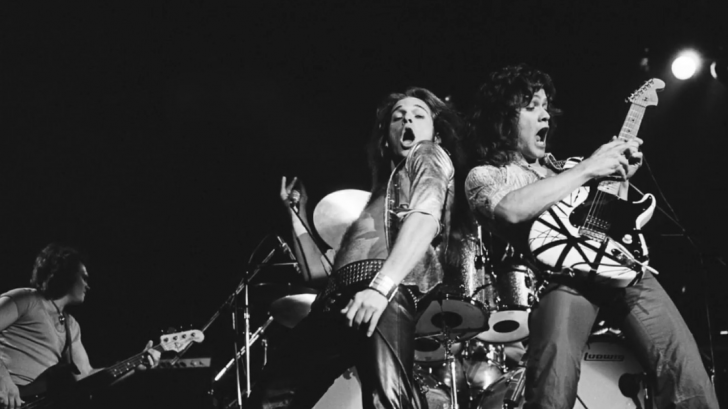They started out as a party group but have since welcomed guitarist Eddie Van Halen, one of rock’s greatest creative guitarists who has spent numerous hours practicing alone to perfect his craft and its instruments. They served as role models for a generation of bands with their entertaining music, videos, sense of style, and personalities, but they were also at the center of two of the most acrimonious breakups in rock history.
We look back at the Weird Songs Van Halen Wrote:
In a Simple Rhyme”/”Growth
Van Halen’s first two albums’ songs were created while they were still performing in nightclubs. In the 1980s, women and kids took advantage of the chance to create new works by expanding their stylistic options and experimenting with more complex arrangements. One of the most pronounced and obvious examples is found in “In a Simple Rhyme,” the album’s final track.
Sunday Afternoon in the Park”/”One Foot Out the Door
Eddie Van Halen descended further into synths with the release of the following year’s fair warning, using a cheap Electro-Harmonix micro-synthesizer to create “Sunday Afternoon in the Park,” after subtly substituting his guitar with an electric piano on Women and children first’s “And the Cradle Will Rock…”.
Big Bad Bill (Is Sweet William Now)
One of the main issues between David Lee Roth and Eddie Van Halen was the use of keyboards. Roth was concerned that the band’s followers would be upset because they only wanted to see Van Halen in “guitar god” mode.
Hot for Teacher
How many chart-topping songs start with a 30-second drum solo, followed by a lengthy guitar solo? “Hot for Teacher” was the final single from David Lee Roth’s first tour with Van Halen. After the song has already started, Roth enters, speaking to his “classmates” instead of singing as Eddie Van Halen abruptly switches to chicken-picking beats.
Inside
On the closing track of his debut album as the new Van Halen singer, Sammy Hagar poses the opening question (“Dude, what kind of shit is this?”). After establishing the new line as a commercial and artistic force with the first eight songs on 5150, Van Halen breaks the fourth wall and directly, if obliquely, addresses the controversy that arose after Hagar was hired to replace Roth.
Mine All Mine
Van Halen took a more serious step with the 1988 opener OU812 after proving they could use keyboards to craft hit singles and pop ballads. The complex “Mine All Mine” approaches jazz-fusion territory in over five minutes and introduces a new lyrical depth that almost pushes Hagar to the breaking point.
Pleasure Dome
Van Halen’s transition back to single-guitar rock was largely marked by the 1991 album For illegal carnal relations. Only the hit single “Right Now” had keyboards; the rest of the songs mostly followed the Hampton standing formula on steroids. On the other hand, the seven-minute “Pleasure Dome” makes a startling turn toward progressive rock as the Van Halen brothers and Michael Anthony compete to go further into King Crimson-style madness. Although good, Hagar’s vocals with a cosmic theme seem out of place.
Strung Out
Ever wished you could witness Eddie Van Halen stomp a piano? Van Halen allegedly “threw everything he could find into the piano and raked various objects from the strings, including ping-pong balls, D batteries, and even silverware” in 1983 while renting composer Marvin Hamlisch’s beach house. Even though there are allegedly hours worth of tapes that detail this, Eddie Van Halen thankfully chose the best 90 seconds to include on the group’s most recent album with Hagar.
Crossing Over
Only one non-album B-side was made available by Van Halen, and it was quite peculiar. In 1983, Eddie Van Halen attempted to play all the instruments and sing all the vocals while paying tribute to a friend who had committed suicide with “David’s Tune.” After joining Van Halen in 1985, Sammy Hagar was eager to finish the song, but the band kept “Crossing Over” in their underground bunkers for almost ten years, up until the passing of manager Ed Leffler.
How Many Say I
The closing track, “How Many Say I,” featuring Eddie Van Halen on his ultimate lead vocal performance, has received the most scrutiny of any song in Van Halen’s catalogue. The group, which was about to introduce Gary Cherone as the third vocalist, made an unusual inventive choice with the piano track, which sounds like a late-era Roger Waters ballad.

